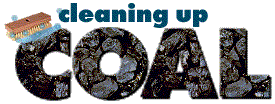Wednesday Morning: Lüg mich an, Lügner
I admit freely my facility with the German language is poor. I hope this post’s headline reads, “Lie to me, Liar.” Which is about as close as I could get to “Lying Liars” because I can’t conjugate the verb ‘to lie.’
~shrug~
It’s not like anybody’s paying me for this, unlike the lying liars at Volkswagen who’ve been paid to deceive the public for a decade. This video presentation featuring Daniel Lange and Felix Domke — a security consultant and an IT consultant, respectively, who reverse engineered VW’s emissions control cheat — is a bit long, but it’s chock full of unpleasant truths revealing the motivations behind VW’s Dieselgate deceptions. The video underpins the cheat outlined in a 2006 VW presentation explaining how to defeat emissions tests.
The one problem I have with this video is the assumption that the fix on each of the affected vehicles will be $600. Nope. That figure is based on how much has been set aside for the entire Dieselgate fix, NOT the actual cost to repair the vehicles.
Because if VW really fixed the vehicles to match the claims they made when they marketed and sold these “clean diesel” passenger cars, it’d cost even more per vehicle. I suspect one of the motivations behind inadequate reserves for a true repair is a reluctance to disclose to competitors how much emissions standards-meeting “clean diesel” really costs.
And of course, avoiding more stringent calculations also prevents an even bigger hit to the company’s stock price, which might affect the pockets of some board members and executives rather disproportionately to the rest of the stock market.
Just how closely that figure per car hews to the agreement with the court this past week will be worth noting, since the video was published in December last year.
But now for the much bigger, even more inconvenient Lügner Lügen: This entire scandal exposes the fraud that is the U.N. Framework Convention on Climate Change Paris agreement.
We know a small nonprofit funded research by a tiny group of academics exposing VW’s emissions controls defeat. We know this set off a cascade of similar analysis, exposing even more cheating by more automobile manufacturers.
But why are we only now finding out from nonprofits and academics about this fraud? Didn’t our elected representatives create laws and the means for monitoring compliance as well as enforcement? Why aren’t governments in the U.S. and the EU catching these frauds within a year of their being foisted on the public?
These questions directly impact the Paris agreement. We’re not starting where emissions standards have been set and where the public believes conditions to be, but at real emissions levels. In other words, we are digging out of a massive pollution hole.
Our elected officials across the world will avoid funding the dig-out; they’ll continue another layer of lies to prevent removal from office. And we can reasonably expect from them only what they’ve done so far, which Dieselgate has proven to be little.
For that matter, Flint’s water crisis has much in common with Dieselgate, relying on academic research and nonprofit entities to reveal mortal threats to the community. Flint’s crisis showed us government at all levels can be even worse at writing laws, monitoring compliance, and subsequent enforcement.
If the public cannot expect government to do the job it believes it elected them to do over the last several decades, how ever can they expect their government to enact the terms of the Paris agreement? How can we expect third world countries to reduce carbon emissions to save the world from the devastation of climate change while we and our governments continue to ignore corporations’ ongoing deceptions?
No roundup today, gang. I strongly recommend watching the video above. Thanks to BoingBoing for linking to it.

![[image: NOAA's National Integrated Drought Information System (NIDIS)]](https://www.emptywheel.net/wp-content/uploads/2016/04/DroughtGov_GlobalDroughtMap_14APR2016_500pxw.jpg)
![[image: Frigg Spinning Clouds, c. 1900, by John Charles Dollman via Wikimedia.org]](https://www.emptywheel.net/wp-content/uploads/2016/01/FriggSpinning_JohnCharlesDollman-1900_Wikimedia_300pxw-300x201.jpg)


